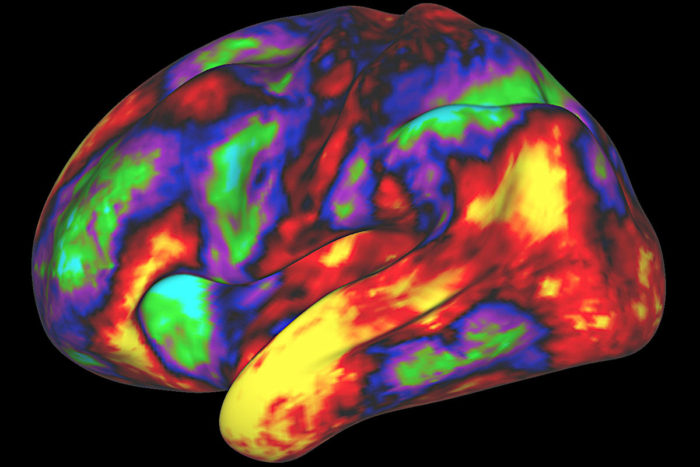Brain development from childhood through adolescence to be focus of national study
Research to examine how genes, environment interact to affect brain
 Human Connectome Project
Human Connectome ProjectIn a landmark national study, scientists will use advanced brain imaging on more than 10,000 children, along with interviews and behavioral tests, to determine how experiences, together with a child’s changing biology, affect brain development. Image courtesy of http://humanconnectome.org

Researchers at Washington University School of Medicine in St. Louis are participating in a national study focused on understanding the brain development of children as they grow into adults. The investigators at the St. Louis site will gather data from 200 pairs of twins and another 200 children from the region as part of the landmark Adolescent Brain Cognitive Development (ABCD) study.
In all, researchers at 19 study sites in the United States will track the biological and behavioral development of more than 10,000 children, from the time they are age 9 or 10, through adolescence and into early adulthood. The Washington University investigators have received $5.6 million in grants from the National Institutes of Health (NIH) to fund the first five years of the study.
“We’re looking at a wide variety of factors, from peers to social support to families, to determine how some things promote healthy brain development while other things can interfere with it,” said Deanna M. Barch, PhD, the Gregory B. Couch Professor of Psychiatry and head of the Department of Psychological & Brain Sciences in Arts & Sciences. “In the process, we will be generating an unprecedented amount of data, not only imaging of the brain’s structure, function and connectivity, but also information about healthy and unhealthy behavior. Frankly, we have a lot to learn about how all of these things influence outcomes as children grow into adulthood.”
Barch said that in addition to brain imaging, the investigators will track what children do as they grow up, from participating in extracurricular activities such as music and sports to playing video games. The researchers also will monitor sleep habits and note when study subjects experiment with alcohol and other substances.
Andrew Heath, DPhil, the Spencer T. Olin Professor of Psychiatry, will oversee recruiting of children from a regional registry of twins to aid in understanding how a child’s genetic makeup, together with life experiences, influence brain development.
“In this study, we are going to be able to achieve a breadth of racial and ethnic diversity that has not been possible previously,” he said. “It’s a tremendous investment in understanding what’s happening in the brains of children and adolescents, and it will allow us to look very closely at the genetics of brain development in a truly diverse sample.”
Adolescence is a time of great physical, emotional and intellectual growth. There is much not yet known about how the varied experiences of adolescents affect development and vice-versa. During the study, the scientists will use advanced brain imaging, interviews and behavioral testing to determine how experiences, together with a child’s changing biology, affect brain development and — ultimately — social, behavioral, academic and health outcomes.
“Not only will we look at the interactions between risk factors and brain development, we’ll also be attempting to define just what normal brain development looks like as children move through puberty,” said the other lead investigator at Washington University, Pamela A. Madden, PhD, a professor of psychiatry.
The researchers believe that after following these children into adulthood, they may find clues in brain imaging that make it possible to identify kids at very early ages who may be at risk for problems, such as substance abuse, depression and other psychiatric disorders. Early identification of issues could allow for support that might improve the odds of healthy development.
“We know that the brain is still developing well into the mid-20s, making it vulnerable to a host of influences,” said NIH Director Francis S. Collins, MD, PhD. “With several NIH institutes and centers working together on this important study, we will be able to learn how a variety of biological events and environmental exposures affect brain development, giving us a greater insight into what helps adolescents traverse that potentially tumultuous time to become healthy and productive adults.”






